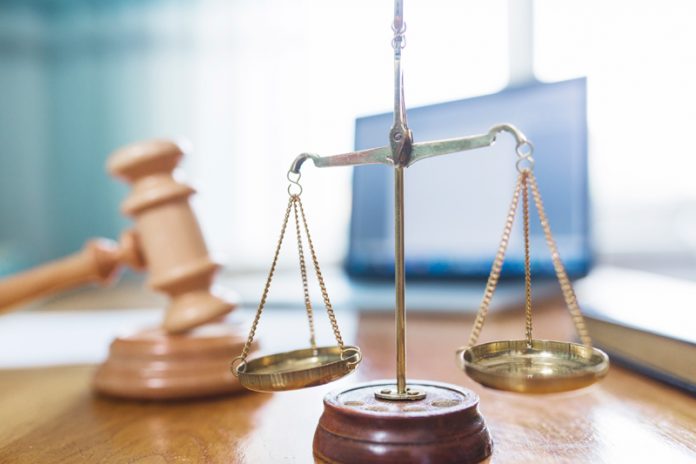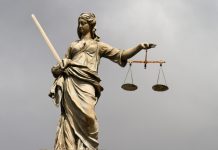This article is written by Ayushi Kumari, from Gujarat National Law University. The article elucidates all the major aspects related to the Registration of Births and Deaths Act, 1969 which was recently invoked by the Uttarakhand Government following the Chamoli disaster.
Table of Contents
Introduction
In the aftermath of the flash flood in the Chamoli district of Uttarakhand in February 2021, the Government invoked the relevant Sections of the Registration of Births and Deaths Act 1969. Under the guidance of the Centre, the State’s Health Department chose to declare individuals who went missing in the tragedy as “dead”. Under this, the missing people’s death certificates will be issued by the authorised government authority to their family or relations. In this article, the author shall be giving an overview of the above-mentioned Act by discussing some relevant provisions of the Act.
Registration of Births and Deaths Act, 1969
Object
The Registration of Births and Deaths Act, 1969 (hereinafter referred to as the Act) regulates matters concerning the registration of births and deaths and matters connected therewith.
Authorities for registration and their powers
Registrar-General
Appointment
As per Section 3 of the Act, the position of Registrar-General is filled by a person appointed by the Central Government of India. For this purpose, the Government puts up a notification in the Official Gazette. The Government can also appoint a person with such designation, as it thinks fit for the purpose to carry out works under the supervision of the Registrar-General.
Powers
The Registrar-General has the power to issue general directions concerning the registration of births and deaths in the territories covered by this Act. They also coordinate and unify the activities of the Chief-Registrars and submit the annual report regarding the works concerning and related to this Act, to the Central Government.
Chief-Registrar
Appointment
Section 4 of the Act defines the position of Chief-Registrar. They are appointed by the Central Government. The Government can also appoint a person with such designation, as it thinks fit for the purpose to carry out works under the supervision of the Chief-Registrar.
Powers
Clause 3 and 4 of Section 4 of the Act defines Chief-Registrar as the chief executive authority, responsible for carrying out the execution of the provisions of this Act. However, he remains the chief executive of a state only and carries out the execution of rules and orders subject to the directions of the state government. He is responsible to coordinate, unite, and supervise the work related to registration in a state.
District-Registrar
Section 6 of the Act defines the appointment and powers of District-Registrar.
Appointment
They are appointed by the State Government, for each revenue district. Also, Additional District Registrars, with suitable qualifications and whom the state government thinks fit, may be appointed to work under the direction and to carry out functions as authorized by the District Registrar.
Registrars
Section 7 of the Act defines the appointment and powers of Registrars.
Appointment
Registrars are appointed by the state government for each local area, which may include land under the jurisdiction of a municipality, panchayat, or other local authority, as well as any other area, or a combination of two or more of them.
Powers and functions
The Registrars are supposed to keep themselves updated about every birth and death that takes place within their jurisdiction. They maintain all the information in a register, given under Section 8 or 9 of the Act. The Registrars attend their office for matters concerning the registration of births and deaths. They are also supposed to work at such hours and on such days as is supervised by the Chief Registrar. With the prior approval from the Chief-Registrar, the Registrars can appoint Sub-Registrars also.
Who are required to register
The following persons are required to give information to the Registrar as is required by him and in the particulars of the registration. The information could be given by the concerned person either in oral or written form.
For the birth or death that takes place at:
House/household
The head of the house or the head of the household (if more than one family is living there) is required to report the births and deaths taking place there. In his absence, during the registration, the person who is recognized as the nearest relative of the head is required to register. Whereas in his absence also, the oldest adult male of the family is required to carry out the reporting of either birth or death taking place in the house/household.
Hospitals/health centres/ maternity or nursing home
The Medical officer in charge or any person whom he (the Medical officer) authorizes to carry out the reporting of births and deaths that takes place at the Hospitals, health centres, maternity or nursing home is entrusted with the duty to do the reporting.
Choultry/ chattram/ hostel/ dharamshala/ boarding-house/ lodging-house/ tavern/ barrack/ toddy shop/ place of public resort
The person who is in charge of the above-mentioned place/s is entrusted with the duty to inform about the birth and death taking place there for the purpose of carrying out the registration of the same.
Jails
The person in charge of the concerned jail is supposed to report the births and deaths that take place there.
- Deserted new-born child or a dead body found in a public place
The headman or other corresponding officer of the village, if it is a village otherwise, the officer in charge of the local police station is entrusted with the duty to report the deserted body of a newborn child or any dead body that is found in a public place.
Special provisions
Regarding births and deaths in a plantation
Section 9 of the Act provides for special provisions regarding births and deaths taking place in a plantation, the information of which is to be provided by the superintendent of the plantation to the Registrar. The explanation as to the term ‘plantation’ is also provided in Section 9 itself which states that-
“Plantation means any land not less than four hectares in extent which is being prepared for the production of, or actually produces, tea, coffee, pepper, rubber, cardamom, cinchona or such other products as the State Government may, by notification in the Official Gazette, specify and the expression”.
Regarding births and deaths of citizens outside India
Section 20 of the Act provides for special provisions relating to the registration of births and deaths of Indian citizens that take place outside India. It provides for the Registrar-general to be informed and to register about such births and deaths. Furthermore, sub-Section 2 of Section 20 provides for children born outside India, whose information has not been provided to the Registrar-General under sub-Section (1) of the same Section, when the parents of that child when return to India to settle therein, are required to provide the birth information for the registration purpose within 60 days from the date of the arrival of the child in India.
Notification of births and deaths
Section 10 of the Act provides that certain persons under certain circumstances owe the duty to notify about the births and deaths. They are midwives, or other medical or health attendants, the keeper or the owner of a place set apart for the disposal of dead bodies or any other person which the state government specifies as by his designation, to inform the Registrar.
Delay in registration
Section 13 of the Act states the provisions regarding the delay in registration of births and deaths.
- The first clause of this Section provides that the information regarding birth or death that is provided to the Registrar within thirty days of its happening will be registered after the payment of late fees by the informant.
- The second clause of this Section provides the information regarding either birth or death that is to be given to the Registrar after thirty days but within one year of its occurrence, will be registered only after the informant produces written permission of the prescribed authority, pays the fees as is required, and shows an affidavit which is made before a notary public or any other officer authorised on this behalf by the State Government.
- The third clause of this Section provides provisions for those registrations which are not registered within one year of their occurrence. In such a case the informant pays the fees as is required and an order is given by either a magistrate of the first class or a Presidency Magistrate after verifying the veracity of the concerned birth or death of a person.
- The fourth clause of this Section provides that the provisions of this Act are not to cause loss or to put anyone in a disadvantaged position when an action has been taken against a person if there is a failure from his side to register any birth or death within the stipulated time frame.
Process of registration
As discussed earlier in this article in greater detail, Section 8 of the Act provides for provisions as to ‘persons required to register births and deaths’, Section 9 of the Act provides ‘Special provisions regarding births and deaths in a plantation’, and Section 10 of the Act provides provisions as to ‘Duty of certain persons to notify births and deaths and to certify the cause of death’. Besides this, Section 11 of the Act provides that the person providing the information, in oral form, regarding either birth or death is required to provide the information about their name, their short description, and place of residence. Besides this, if that person is not able to write, they are required to put their thumb marks against the same.
Penalties
Section 23 of the Act provides for detailed provisions regarding the penalties a person may attract if certain provisions of the Act are not adhered to.
Under Clause 1 of this Section, the following persons will attract the provision of a penalty of fine which may extend up to fifty rupees:
If a person
- Fails to give or provide the information and which comes under that person’s duty to inform regarding any birth or death that takes place, or
- Gives any false information for the registration purpose, or
- Refuses to provide his information as asked for under Section 11 of the Act.
Clause 2 of this Section provides for a penalty of fine payment which may extend to fifty rupees by any Registrar or Sub-registrar who fails in his duty as is expected from him and given in the Act.
Clause 3 of this Section provides for a penalty of fine payment by medical practitioners who fail or neglect their duty as is mentioned and expected from them under sub-section (3) of Section 10.
Clause 4 of this Section provides for penalty for those persons who interrupt or cause to interrupt or contravene any provision of this Act will attract fine payment which may extend to ten rupees.
Clause 5 of this Section provides that a magistrate will be hearing the trial of a person who commits any of the offences as mentioned above.
Maintenance of records
Section 16 of the Act provides that the Registrars are supposed to keep a register of the births and deaths taking place in the area of their jurisdiction. And under Section 17 of the Act any person, subject to certain conditions as mentioned in the section, can cause the Registrars to search for any birth or death and can even obtain information regarding any birth and death. However, the proviso is that no information as to the reason for the death of any person will be disclosed to any person.
Section 19 of the Act provides that the Registrars will send the entries made in the register that is kept by them, either to the Chief Registrars or to any other person appointed by them so as to compile all the entries.
Repeal and saving
Section 31 of the Act provides for the repeal of those acts passed in any state whose any provision is similar to the matters dealt by this Act. this repeal is subject to the provisions of Section 29 of this Act which provides that nothing in this Act will be in derogation to the provisions of the Births, Deaths and Marriages Registration Act, 1886.
Power to remove the difficulty
Section 32 of the Act gives the State government the power to remove any difficulty that arises while implementing any of the provisions of this Act, with the approval of the Central government. The State government in this regard may make provisions or issue any direction which is not inconsistent with the provisions of this Act, in order to remove the difficulty. However, the proviso provides that if in any area more than two years have passed since the usage of this Act, then no order can be made under this section in relation to that area.
Conclusion
Mother Earth is beautiful but can be proved deadliest at certain times, as is evident from the deadly flood that erupted in the Chamoli district creating havoc among people, as it led to many people dying in it and many getting lost.
The birth and death certificates, under the said Act, are issued at the time of birth or death of a person under normal circumstances. But, few exceptional circumstances, like the Chamoli disaster require a different approach to pacify the loss of people. The Government of Uttarakhand decided to issue death certificates after a mandated investigation, to the family members of the persons who went missing and are possibly deceased beyond all reasonable doubt but his/her body is yet to be discovered.
The decision of the Uttarakhand government can be said to be a reasonable step taken at this miserable time for the family members who lost their near and dear ones or are still in a false hope of them getting back.
References
- https://www.indiacode.nic.in/bitstream/123456789/11674/1/the_registration_of_births_and_deaths_act%2C_1969.pdf
- https://www.latestlaws.com/latest-news/what-is-registration-of-births-deaths-act-1969-invoked-by-uttarakhand-govt-to-declare-missing-persons-in-chamoli-disaster-as-dead/
- https://www.thehindu.com/news/national/chamoli-disaster-due-to-avalanche-says-geological-survey-of-india/article35031786.ece
Students of Lawsikho courses regularly produce writing assignments and work on practical exercises as a part of their coursework and develop themselves in real-life practical skills.
LawSikho has created a telegram group for exchanging legal knowledge, referrals, and various opportunities. You can click on this link and join:
https://t.me/joinchat/L9vr7LmS9pJjYTQ9
Follow us on Instagram and subscribe to our YouTube channel for more amazing legal content.
 Serato DJ Crack 2025Serato DJ PRO Crack
Serato DJ Crack 2025Serato DJ PRO Crack











 Allow notifications
Allow notifications



